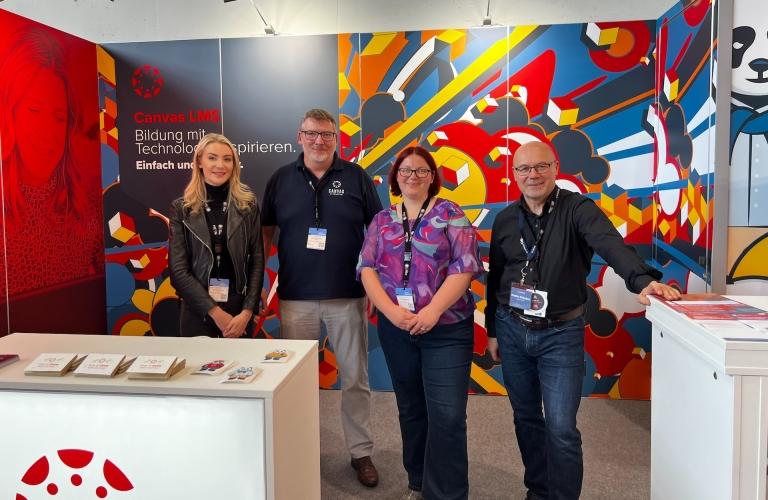
We had the opportunity to co-present with the University of Technology Nuremberg (UTN) earlier this week at Learntec, Germany. The session opened how all good sessions should, that is, by getting straight to the point - the traditional university model is no longer sufficient, and here’s why.
Walk into any campus library and it won’t be long before you hear a student say “What’s Wikipedia saying?” or “Just get ChatGPT to summarise the text”. As such the “knowledge transfer” prototype is outdated.
Both universities and students need to reimagine their roles. Universities must do more to deliver value to students and the job market. And students need to shift roles from consumers to active participants in their learning.
What is UTN doing differently?
Since its grand opening just three years ago, UTN has set itself apart by embracing the ethos of an agile business, remaining flexible and adaptable to meet not just the ‘new normal’, but the ‘never normal’.
They’ve adopted the principles of being interdisciplinary, international, digital, and sustainable. Specifically, they’re forging new paths in research and teaching, structure, and administration. So what does this mean in practice?
How does their “flipped classroom” model work?
UTN prides itself on the values of mutual support, a sense of belonging, feedback culture and transparency. These values are underpinned by innovative teaching and learning practices, including:
- Lectures are being swapped for self-paced study with digitally supported learning scenarios and on-campus meetings in small study groups
- Courses designed to be competency-orientated and continuously updated in line with individual and job-market needs
- Personalised, competency-oriented learning objectives and activities aligned with these learning objectives
- Instead of one-off exams, continuous analysis of student performance. This includes process-based and learning-focused assignments & individual feedback to promote competency development.
Where does Canvas LMS come in?
All of the above is supported by an LMS that enables blended, student-first, flexible learning. Here are some of the outcomes UTN has seen since working with Canvas LMS.
- Self-paced learning for students. Course content is modifiable. What’s more, educators can offer individual learning paths based on student performance, providing targeted support where needed.
- Teaching to suit different learning styles. Course designers create multimedia learning materials to suit the learner; from videos and text to interactive elements such as quizzes. Educators can also deliver varied assignment formats, allowing students to choose how they demonstrate their knowledge and skills.
- Equitable access and interaction. Learners can come together through Canvas LMS - whether on desktop or mobile, to exchange ideas, ask questions, and learn from each other. Teachers can moderate and guide discussions to foster deeper insights and reflections.
- Better peer-to-peer support. Students can evaluate each other's work and give feedback. This promotes collaborative learning and reduces the central role of the teacher as the sole evaluator.
- Grading in minutes, not hours. SpeedGrader allows the fast and efficient grading of assignments with the ability to provide detailed feedback, including written comments, audio, and video feedback.
- Informed decision-making. Thanks to Canvas analytics, educators can get an overview of overall performance and participation in the course to identify trends and problem areas and respond accordingly.
Curious about how Canvas LMS can improve educational efficiency and student outcomes at your institution? Get in contact to organise a demo here.
Related Content
 canvas-biz-investment.jpg
canvas-biz-investment.jpgBlogs
 Upskilling and Reskilling Preparing Students for a Modernized Workforce.png
Upskilling and Reskilling Preparing Students for a Modernized Workforce.pngBlogs
 skills-forward.jpg
skills-forward.jpgBlogs
